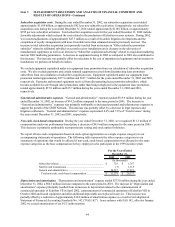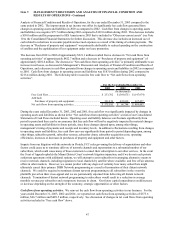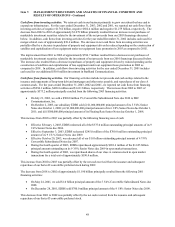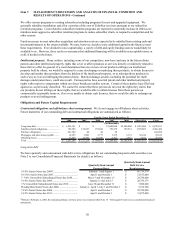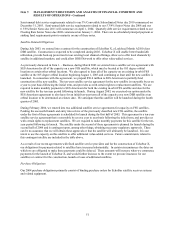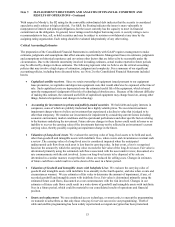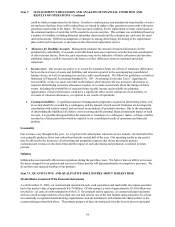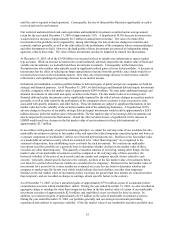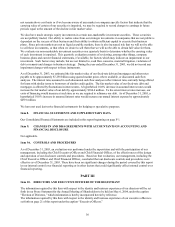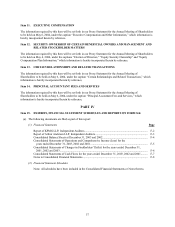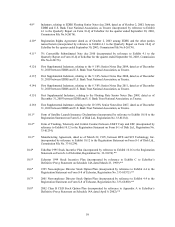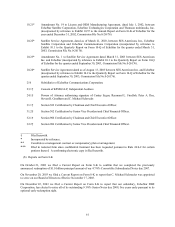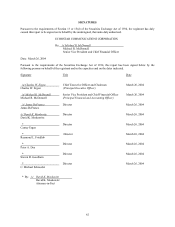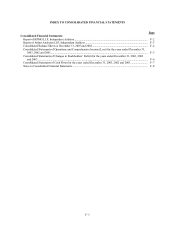Dish Network 2003 Annual Report Download - page 59
Download and view the complete annual report
Please find page 59 of the 2003 Dish Network annual report below. You can navigate through the pages in the report by either clicking on the pages listed below, or by using the keyword search tool below to find specific information within the annual report.Item 7. MANAGEMENT’S DISCUSSION AND ANALYSIS OF FINANCIAL CONDITION AND
RESULTS OF OPERATIONS - Continued
54
could be further compromised in the future. In order to combat piracy and maintain the functionality of active
set-top boxes that have been sold to subscribers, we intend to replace older generation smart cards with newer
generation smart cards in the future. We have accrued a liability for the replacement of smart cards based on
the estimated number of cards that will be needed to execute our plan. This estimate was established based on
a number of variables, including historical subscriber churn trends and the estimated per card costs for smart
card replacements. Different assumptions or changes in, among other things, the timing of the replacement
plan could result in increases or decreases in the smart card replacement reserve.
• Allowance for Doubtful Accounts. Management estimates the amount of required allowances for the
potential non-collectibility of accounts receivable based upon past experience of collection and consideration
of other relevant factors. However, past experience may not be indicative of future collections and therefore
additional charges could be incurred in the future to reflect differences between estimated and actual
collections.
• Income taxes. Our income tax policy is to record the estimated future tax effects of temporary differences
between the tax bases of assets and liabilities and amounts reported in the accompanying consolidated
balance sheets, as well as operating loss and tax credit carryforwards. We follow the guidelines set forth in
Statement of Financial Accounting Standards No. 109, “Accounting for Income Taxes” regarding the
recoverability of any tax assets recorded on the balance sheet and provide any necessary allowances as
required. Determining necessary allowances requires us to make assessments about the timing of future
events, including the probability of expected future taxable income and available tax planning
opportunities. Future performance could have a significant effect on the realization of tax benefits, or
reversals of valuation allowances, as reported in our results of operations.
• Contingent liabilities. A significant amount of management judgment is required in determining when, or if,
an accrual should be recorded for a contingency and the amount of such accrual. Estimates are developed in
consultation with outside counsel and are based on an analysis of potential outcomes. Due to the uncertainty
of determining the likelihood of a future event occurring and the potential financial statement impact of such
an event, it is possible that upon further development or resolution of a contingency matter, a charge could be
recorded in a future period that would be material to our consolidated results of operations and financial
position.
Seasonality
Our revenues vary throughout the year. As is typical in the subscription television service industry, the first half of the
year generally produces fewer new subscribers than the second half of the year. Our operating results in any period
may be affected by the incurrence of advertising and promotion expenses that do not necessarily produce
commensurate revenues in the short-term until the impact of such advertising and promotion is realized in future
periods.
Inflation
Inflation has not materially affected our operations during the past three years. We believe that our ability to increase
the prices charged for our products and services in future periods will depend primarily on competitive pressures. We
do not have any material backlog of our products.
Item 7A. QUANTITATIVE AND QUALITATIVE DISCLOSURES ABOUT MARKET RISK
Market Risks Associated With Financial Instruments
As of December 31, 2003, our restricted and unrestricted cash, cash equivalents and marketable investment securities
had a fair market value of approximately $4.170 billion. Of that amount, a total of approximately $3.920 billion was
invested in: (a) cash; (b) debt instruments of the U.S. Government and its agencies; (c) commercial paper and notes
with an overall average maturity of less than one year and rated in one of the four highest rating categories by at least
two nationally recognized statistical rating organizations; and (d) instruments with similar risk characteristics to the
commercial paper described above. The primary purpose of these investing activities has been to preserve principal


